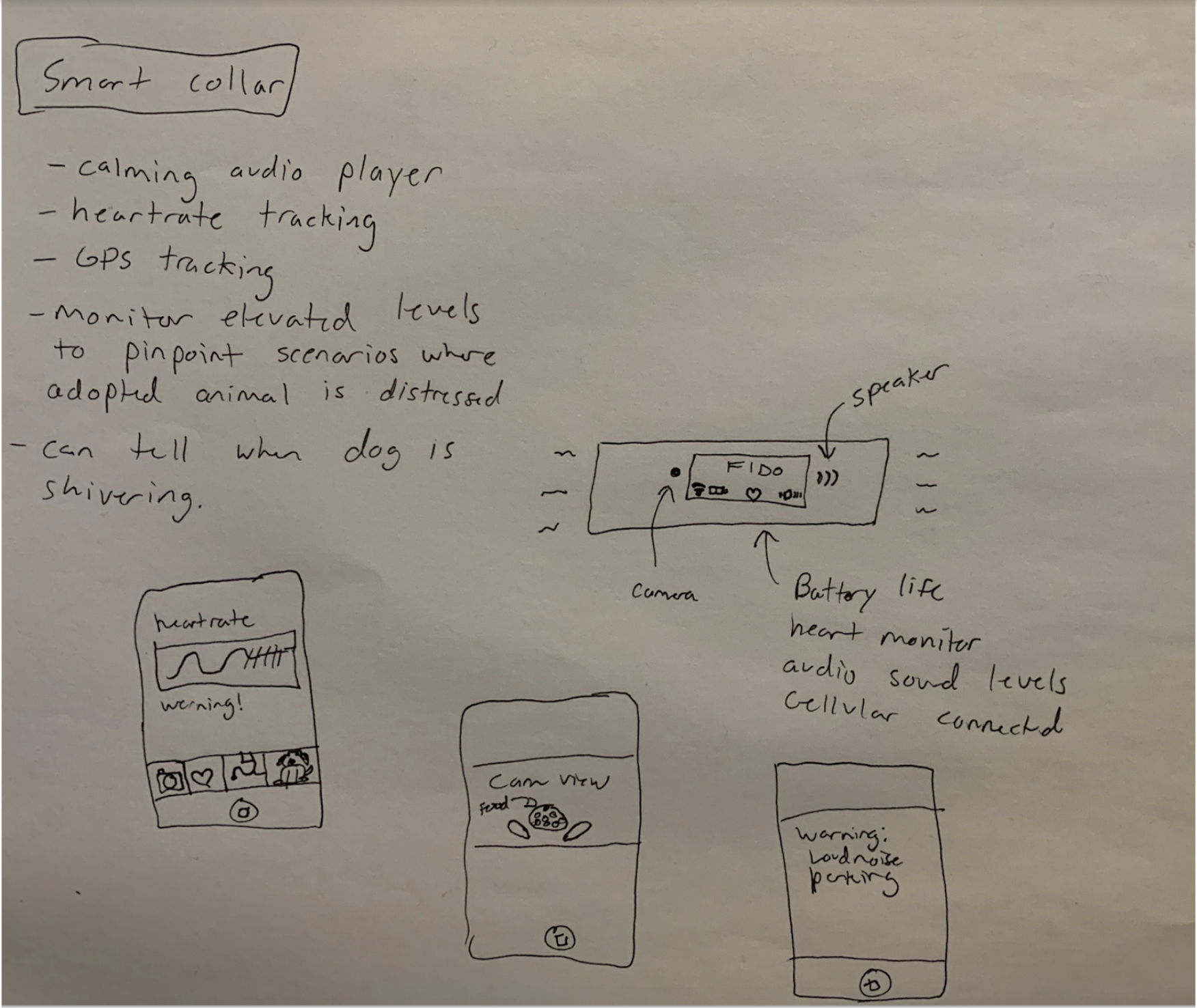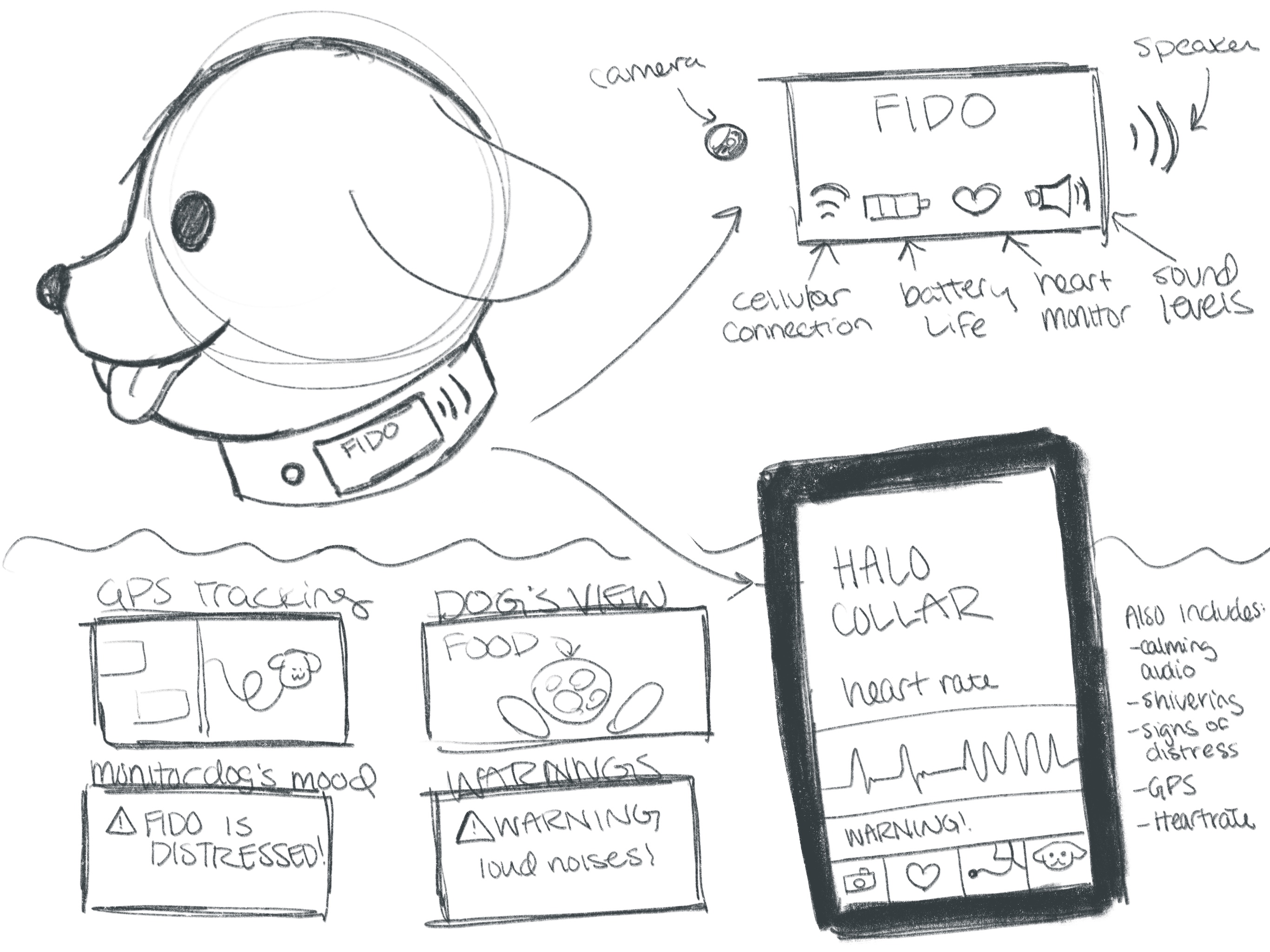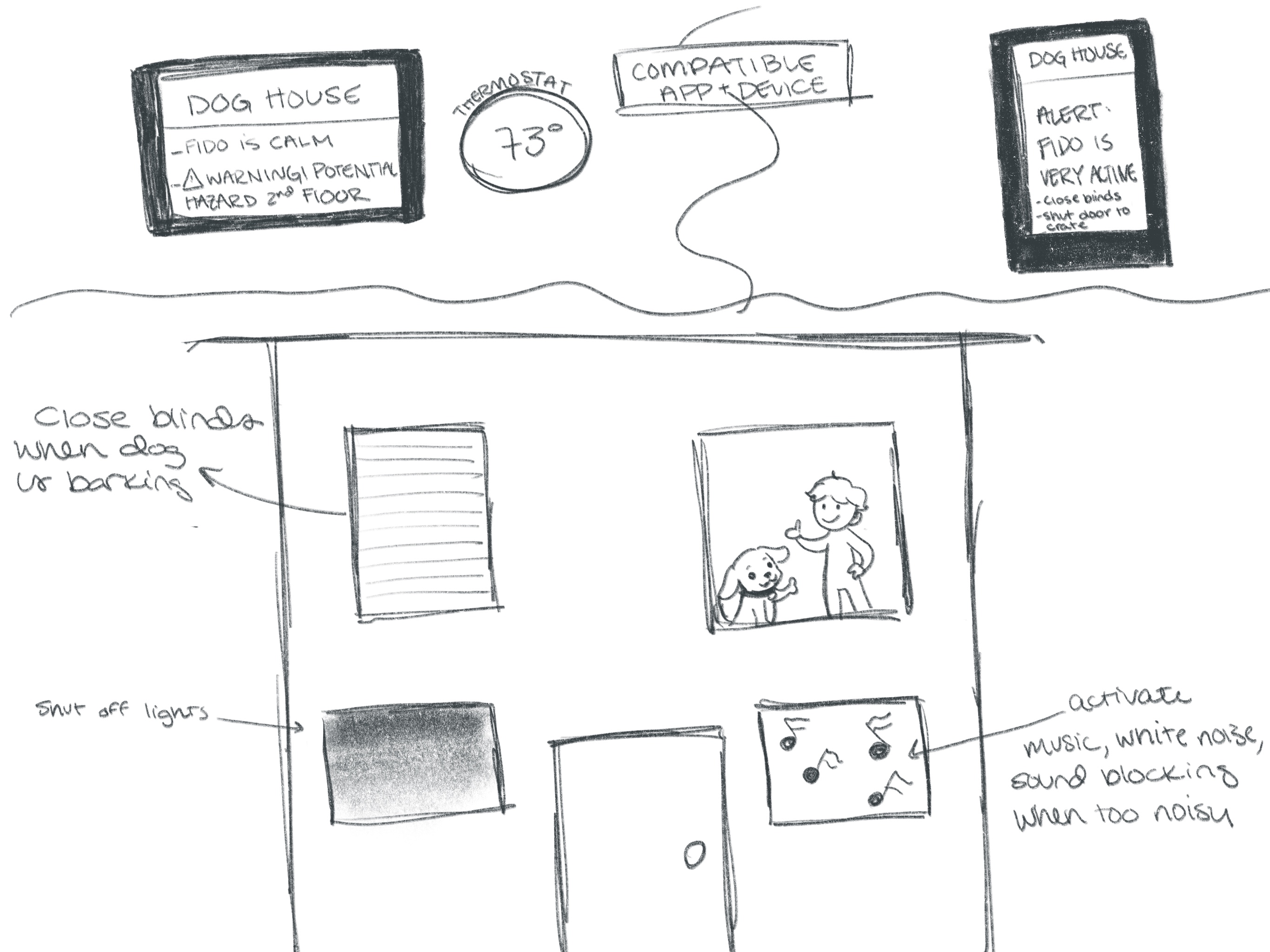Milestone 1
Scope Definition
Each year, approximately 6.5 million companion animals enter shelters in the US. Less than half of these animals, however, are adopted [1, 2]. In order to address the rampant issue of pet homelessness and increase the likelihood that these animals will have a second chance at life, we decided to explore how ubiquitous computing can help ensure newly adopted pets are remaining in their new homes.
In order to narrow the scope of our project, we elected to focus our efforts on newly adopted dogs and their owners. Specifically, we would like to augment the most frustrating parts of the process of the dog’s transition from the shelter to the home, with a focus on the behavioral issues that often arise and cause owners to return their new companions. In order to narrow our scope further, we’d like to specifically focus on the first month after adoption, as that is the critical time period after which most owners who choose to return their dog to the shelter will do so [needs citation].
References:
[1] https://www.aspca.org/animal-homelessness/shelter-intake-and-surrender
[2] https://www.aspca.org/animal-homelessness/shelter-intake-and-surrender/pet-statistics
[3] https://www.tandfonline.com/doi/abs/10.2752/089279305785593965?casa_token=ZdC0W-ztc_MAAAAA:FLpqqozFO2_ksfuOqx6_sA-Sm3wm1v1jq1n4gPW_c0gj89JnkYWthDi45Zf4NQu_oUuzpca2tWLLNw
Motivation
The following factors are what motivated our team to further explore this context and will act as a guide us as we continue refining our concept and working on our project:
1. Decrease friction throughout the adoption process so that animals and their potential adopters are more likely to have a pleasant experience
2. Reduce the risk of failed adoptions by ensuring potential adopters find the right match for their home and lifestyle their first time adopting
3. Assist shelter staff and volunteers with the care and maintenance of animals to ensure their comfort and in turn leave the best possible impression on potential adopters
Observations
Using semi-structured interviews, literature reviews, and informal observations (available here), we developed the following key findings:
Behavioral issues are both the number one complaint of new pet owners, and the number one reason animals are returned to shelters.
New pet owners, while often excited about their new companions, often experience behavioral issues in the time period following the adoption process. Some of the most prominent behavioral issues were related to aggression and fearfulness. For example, some animals acted aggressively toward established household pets, creating conflict in the home. Others experienced fearfulness and anxiety that resulted in more undesirable behaviors such as excessive whining or barking, soiling in the house, and destruction of items in the home such as shoes or furniture. Crate training was cited as a possible solution, but interviewees seemed interested in augmenting this solution further.
When researching the reasons why adopted animals were returned to the shelter, these behavioral issues were cited as the reasons new owners chose to rehome their animals. Based on our findings and the supporting research we have found, we believe that addressing these behavioral issues could decrease frustration when transitioning a newly adopted animal to the home and in turn, increase the likelihood of successful adoption.
There are some solutions that have been proven to work, but could potentially be augmented further.
In order to overcome behavioral issues that put additional strain on the adoption and rehoming processes, some analog methods and solutions are currently available. In terms of processes, a consistent routine and the consistent applications of clear boundaries are critical for dogs when they are first introduced to a new home. Reducing sensory overload by blocking the view in windows, providing busy toys, white noise machines, pheromone treatments can assist in establishing and reinforcing good behavior. Research indicating that pet owners who ask for help before returning an animal are more likely to keep the pet than others who did not seek advice, so access to a pet sitter, dog walker, trainer, or other animal behavior specialist are also important existing solutions. However, this overwhelming checklist contains a number of opportunities for augmentation and automation that can decrease the likelihood an animal will be returned to a shelter.
New pet owners are willing to invest in solutions, but affordability and effectiveness are key considerations for them.
New pet owners were eager to talk about potential technology solutions to the behavioral issues they experienced with their pets. They specifically cited things that would calm the dogs and assist them in monitoring their mood, or opportunities to decrease triggers in their environment. The concerns with potential solutions mainly centered around cost and effectiveness. Overall, participants seemed willing to invest in solutions they knew would work and help them keep their new companion in the home.
Ideation Process
Originally, our group came together and discussed our personal observations. After we explored these observations, we narrowed our ideas down to one potential observation. Since one observation touched on animal shelters, we decided to explore the issues surrounding pet owners and adopting a new dog. Additionally, individual interviews were conducted to provide further context regarding the problems surrounding adopting a dog and introducing them to a new home. Based on these interviews and observations, three different concepts were sketched that focused on recognizing and reducing any potential stress and anxiety that could be occurring in a dog’s environment while transitioning into a new home. After further reviewing our sketches and themes, we came up with the following three concepts: Halo Collar, Doghouse, and Guardian.
Concept 1: Guardian
We found that few of the most common reasons for dogs being returned to the shelter included destructive behaviors and barking. To prevent destructive behavior and barking, we came up with a “smart-playpen” that influenced the five senses (sight, smell, hearing, taste, and touch), which ideally would be used when the owner was not home or during loud events such as on July 4th. When the “smart-playpen” senses a dog barking incessantly five things will happen: the dog’s view will be blocked off by automatically drawn curtains around the playpen walls, pheromones will be released (known to calm dogs), noise will play from speakers which can be either music, white noise, or any other specific noise that they can be conditioned to feel comfortable with at exposure, an automatically distributed snack once the dog stops barking for a certain amount of time, and finally, the dog bed will warm up or cool down if it senses an abnormal body temperature.

Concept 2: Halo Collar
For the concept of Halo Collar, we looked at ways connecting a smart collar to a dog owner could be utilized to help reduce unwanted behavior and help connect the dog’s emotions to the owner through various sensors and data points. Halo Collar can identify whether or not the dog has an increased heart rate, and owners can identify patterns to help mitigate any stress or anxiety that may be occurring. If the dog is shaking, data is also recorded to help provide a full picture of the dog’s emotional level. Halo Collar can even record instances of loud noises, which may startle and stress your dog out. Calming music or white noise can even be played through a tiny speaker on the collar to help relax the dog. Lastly, video recording and GPS tracking provides even more information surrounding your dog’s environment and what could be causing any undue stress.


Concept 3: Dog House
While we explored the opportunity to augment spaces in the home for the dog with Guardian, we came up with an idea to augment the entire home: Dog House. With the Dog House system, new pet owners would have the ability to control their house remotely and identify ways to prevent destruction or unwanted behaviors before they occur. As a full smart home solution, Dog House would allow the user to open and close doors and blinds, shut off lights, and decrease the sensory load on anxious, fearful, or aggressive dogs from their phone or compatible device. Dog House also identifies potential issues for the owners during the process of “puppy proofing” using motion, light, and sound sensors and notifies the user through phone notifications and the central communication screen located near the home’s thermostat(s).
